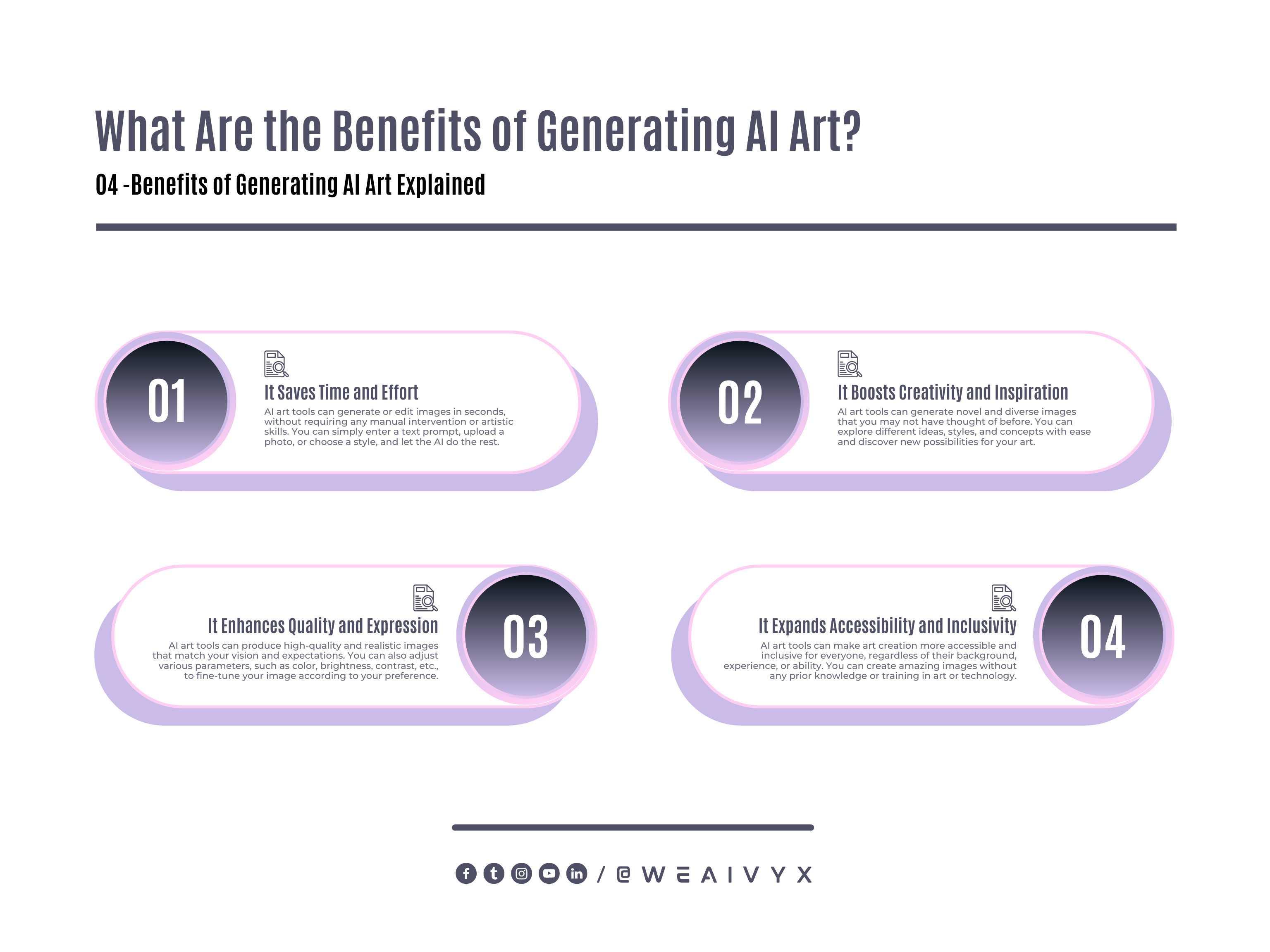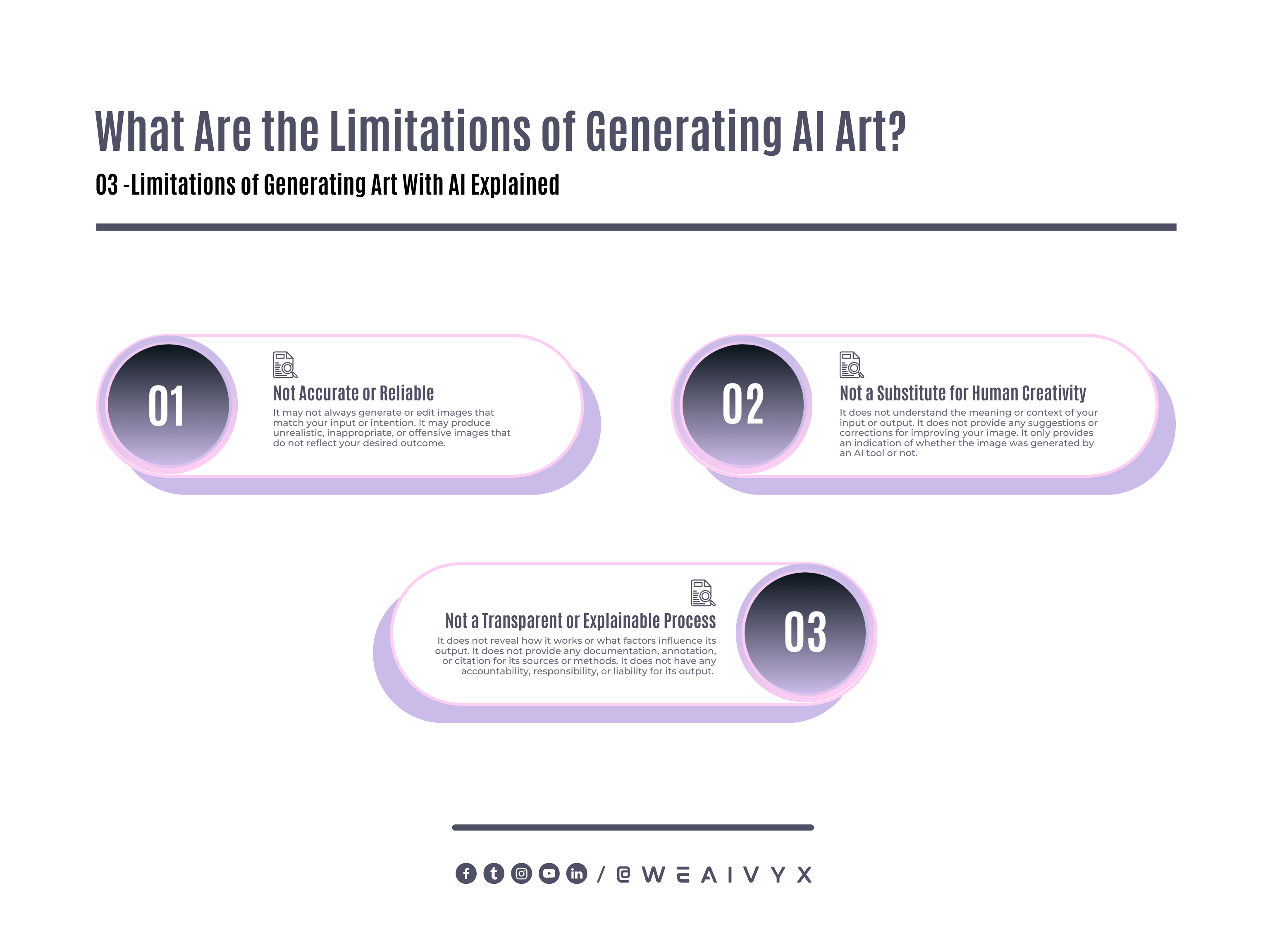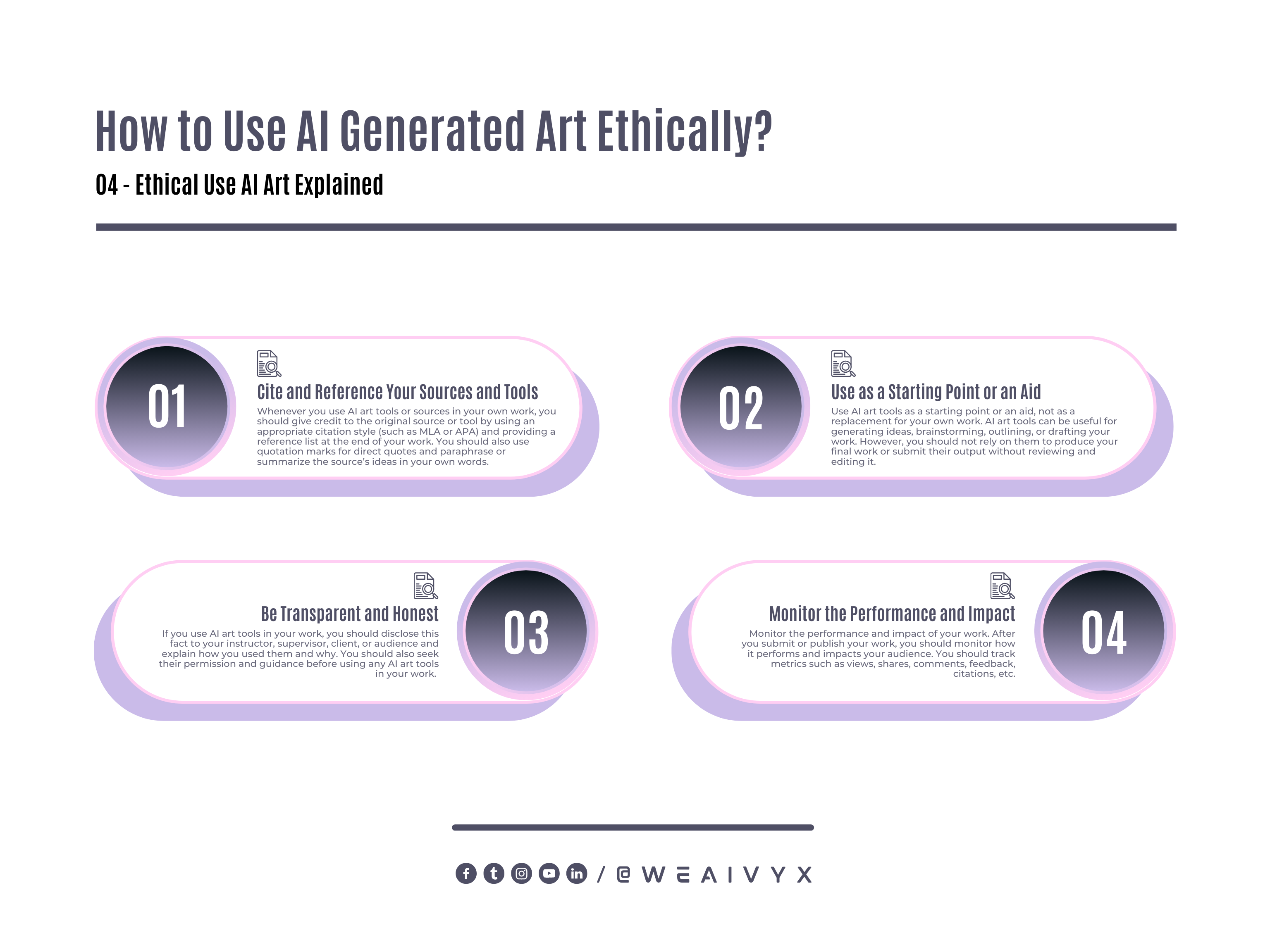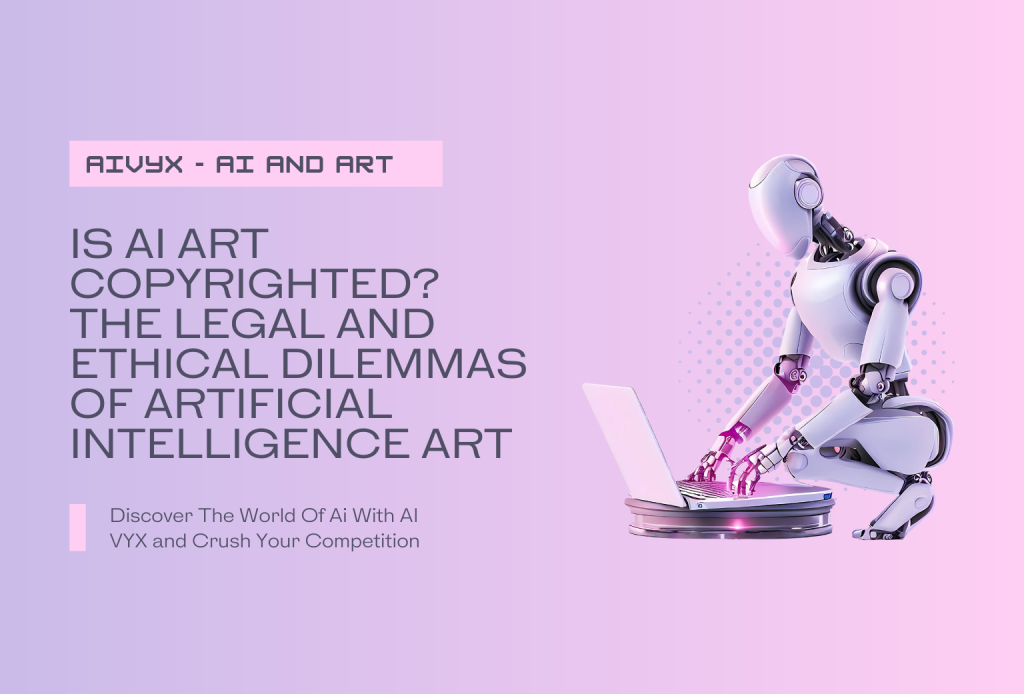AI art is a new and exciting form of art that uses artificial intelligence, such as generative adversarial networks (GANs), to create or edit images.
AI art can produce stunning and unique images that challenge the conventional notions of creativity and originality.
But who owns the rights to AI art?
Is AI art copyrighted?
Can you use AI art commercially or personally without infringing or violating any laws or regulations?
AI art raises many legal and ethical dilemmas that are not yet fully resolved or understood. In this blog post, we’ll explain what AI art is, how it works, and what benefits it offers to artists and non-artists alike.
We’ll also explore the current status and challenges of AI art copyright, and share some best practices for using AI art ethically and responsibly.
What is AI Art and How Does It Work?
AI art is a form of art that uses artificial intelligence, such as generative adversarial networks (GANs), to create or edit images.
GANs are a type of neural network that consists of two competing models: a generator and a discriminator.
The generator tries to create realistic images from random noise or text, while the discriminator tries to distinguish between real and fake images.
The generator learns from the feedback of the discriminator and improves over time.
AI art can produce high-quality and diverse images that match the input description or style.
For example, an AI art tool can generate an image of a cat wearing sunglasses when given the text prompt “a cool cat”. Or, an AI art tool can apply the style of Van Gogh’s Starry Night to a photo of your house.
AI art can also produce novel and original images that may not have any human counterpart or reference.
For example, an AI art tool can generate an image of a surreal creature that does not exist in nature. Or, an AI art tool can generate an image of a new style or genre that has never been seen before.
You can use AI art for various purposes, such as entertainment, education, research, or commerce.
Some other implications of AI art are a source of inspiration, experimentation, or expression for artists and non-artists alike.
What Are the Benefits of AI Art?
AI art offers many benefits to artists and non-artists alike who want to create or enhance their images. Some of these benefits are:
It Saves Time and Effort. AI art tools can generate or edit images in seconds, without requiring any manual intervention or artistic skills. You can simply enter a text prompt, upload a photo, or choose a style, and let the AI do the rest.
It Boosts Creativity and Inspiration. AI art tools can generate novel and diverse images that you may not have thought of before. You can explore different ideas, styles, and concepts with ease and discover new possibilities for your art.
It Enhances Quality and Expression. AI art tools can produce high-quality and realistic images that match your vision and expectations. You can also adjust various parameters, such as color, brightness, contrast, etc., to fine-tune your image according to your preference.
It Expands Accessibility and Inclusivity. AI art tools can make art creation more accessible and inclusive for everyone, regardless of their background, experience, or ability. You can create amazing images without any prior knowledge or training in art or technology.

What Are the Challenges and Limitations of AI Art?
AI art is not a perfect solution for creating or editing images. It has some challenges and limitations that you should be aware of. Some of these are:
Not 100% Accurate or Reliable
It is not 100% accurate or reliable. It may not always generate or edit images that match your input or intention.
It may produce unrealistic, inappropriate, or offensive images that do not reflect your desired outcome.
Therefore, you should always review and verify the output of AI art tools before using or sharing them.
Not a Substitute for Human Creativity
It is not a substitute for human creativity or feedback. It does not understand the meaning or context of your input or output.
It does not provide any suggestions or corrections for improving your image. It only indicates whether the image was generated by an AI tool or not.
Therefore, you should use it as a complementary tool to enhance your creativity or feedback.
Lack of Transparency
It is not a transparent or explainable process. It does not reveal how it works or what factors influence its output.
It does not provide any documentation, annotation, or citation for its sources or methods. It does not have any accountability, responsibility, or liability for its output.
Therefore, you should use it with caution and discretion.

What is the Status and Challenge of AI Art Copyright?
AI art raises many legal and ethical dilemmas that are not yet fully resolved or understood. One of the most pressing issues is who owns the rights to the artworks created by AI systems.
According to the current US laws on intellectual property, artwork or any type of creation can only be copyrighted if it’s 100% original and made by an individual.
However, AI art is often generated by using data from existing sources, such as images, texts, or sounds, and applying algorithms that learn from and transform them into new outputs.
This raises questions about whether AI art is original enough to be protected, and whether the human creators who use AI tools have enough creative control over the final work.
The US Copyright Office has recently issued new guidance to clarify when artistic works created with the help of AI are copyright-eligible.
The office said that copyright protection depends on whether AI’s contributions are “the result of mechanical reproduction,” such as in response to text prompts, or if they reflect the author’s “own mental conception.”
The office also said that applicants must disclose when their work includes AI-created material and that previously filed applications that do not disclose AI’s role must be corrected.
The implications of these decisions are vast for both artists and consumers of AI art. On one hand, they may encourage more innovation and experimentation with AI technologies, as well as more transparency and accountability for their use.
On the other hand, they may also limit the scope and value of AI art, as well as create legal uncertainties and challenges for enforcing and defending rights.
As AI art becomes more popular and sophisticated, these issues will likely continue to evolve and require further attention and regulation.
Who Owns the Rights to AI Art?
AI art raises many legal and ethical dilemmas that are not yet fully resolved or understood.
One of the most pressing issues is: who owns the rights to AI art?
Copyright is a legal right that grants the author or creator of an original work the exclusive right to control its use, distribution, reproduction, adaptation, and modification.
Copyright protects the expression of an idea, not the idea itself.
But who is the author or creator of AI art?
Is it the human who provided the input, such as text, photo, or style?
Is it the AI tool that generated or edited the output, such as image or video?
Is it the developer or owner of the AI tool that designed or trained the algorithm?
Is it a combination of any or all of these?
The answer is not clear or simple, as different jurisdictions may have different laws or regulations regarding AI art.
For example, in the US, there is no specific law or regulation that addresses AI art.
However, there are some general principles and precedents that may apply.
For instance, according to the US Copyright Office, “only works created by a human can be copyrighted”.
Therefore, AI art that is generated entirely by an AI tool without any human input or intervention may not be eligible for copyright protection.
However, AI art that is generated or edited by an AI tool with some human input or intervention may be eligible for copyright protection, depending on the degree and nature of human involvement.
For example, if a human provides a text prompt to an AI tool that generates an image based on the prompt, the human may be considered the author or creator of the image.
However, if a human only provides a random noise to an AI tool that generates an image based on the noise, the human may not be considered the author or creator of the image.
Furthermore, AI art that is generated or edited by an AI tool may also be subject to other rights or obligations, such as patent rights, trademark rights, moral rights, contractual rights, etc, depending on the context and circumstances of its creation and use.
For example, if an AI tool is patented by its developer or owner, it may have the right to control its use and distribution. Or, if an AI tool uses a trademarked style or logo in its output, it may infringe or violate the trademark rights of its owner.
Therefore, before using or sharing AI art, you should be aware of the legal and ethical implications and consult with a professional lawyer or expert if necessary.
You should also respect the rights and interests of yourself and others involved in the creation and use of AI art.
How to Use AI Art Ethically and Responsibly?
AI art is a new and exciting form of art that uses artificial intelligence, such as generative adversarial networks (GANs), to create or edit images.
AI art can produce stunning and unique images that challenge the conventional notions of creativity and originality.
But how can you use AI art ethically and responsibly?
How can you respect the rights, privacy, security, diversity, inclusion, equity, accountability, and transparency of yourself and others involved in the creation and use of AI art?
AI art raises many ethical and social dilemmas that are not yet fully resolved or understood. Therefore, you should follow some best practices for using AI art ethically and responsibly, such as:
Cite and Reference Your Sources and Tools Properly
Cite and reference your sources and tools properly.
Whenever you use AI art tools or sources in your work, you should give credit to the source or tool by using an appropriate citation style (such as MLA or APA) and providing a reference list at the end of your work.
You should also use quotation marks for direct quotes and paraphrase or summarize the source’s ideas in your own words.
You can use the free Scribbr Citation Generator to create correctly formatted citations in MLA or APA Style.
Use AI Art Tools as a Starting
Use AI art tools as a starting point or an aid, not as a replacement for your work.
AI art tools can be useful for generating ideas, brainstorming, outlining, or drafting your work.
However, you should not rely on them to produce your final work or submit their output without reviewing and editing it.
You should always check the accuracy, quality, relevance, and originality of the image generated by AI art tools and make sure it reflects your voice and perspective.
You should also cite and reference any AI art tools you use in your work.
Be Transparent About Your Use of AI Art Tools
Be transparent and honest about your use of AI art tools. If you use AI art tools in your work, you should disclose this fact to your instructor, supervisor, client, or audience and explain how you used them and why.
You should also seek their permission and guidance before using any AI art tools in your work. You should not try to hide or deceive anyone about your use of AI art tools or pretend that their output is your work.
Monitor the Performance and Impact of Your Work
Monitor the performance and impact of your work. After you submit or publish your work, you should monitor how it performs and impacts your audience.
You should track metrics such as views, shares, comments, feedback, citations, etc.
You should also respond to any questions or suggestions from your audience and address any issues or concerns that may arise from your use of AI art tools.

By following these best practices, you can use AI art ethically and responsibly in your work. You can also contribute to the development and improvement of AI art tools and their impact on society.
Conclusion
AI art is a new and exciting form of art that uses artificial intelligence, such as generative adversarial networks (GANs), to create or edit images. AI art can produce stunning and unique images that challenge the conventional notions of creativity and originality.
But who owns the rights to AI art?
Is AI art copyrighted?
Can you use AI art commercially or personally without infringing or violating any laws or regulations?
AI art raises many legal and ethical dilemmas that are not yet fully resolved or understood. Therefore, before using or sharing AI art, you should be aware of the legal and ethical implications and consult with a professional lawyer or expert if necessary.
You should also respect the rights and interests of yourself and others involved in the creation and use of AI art. We hope this blog post has given you some useful information about whether it ai art copyrighted.
